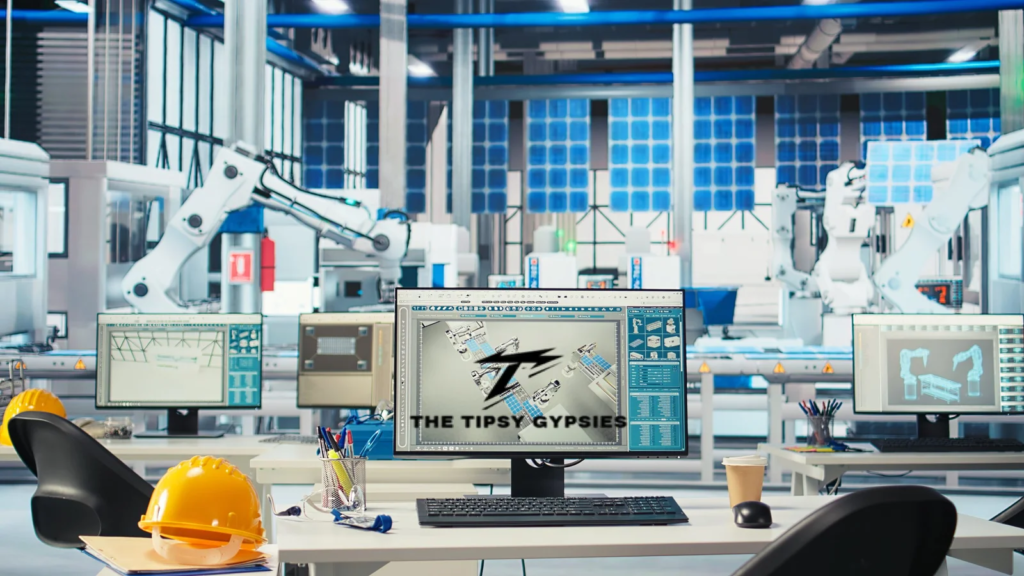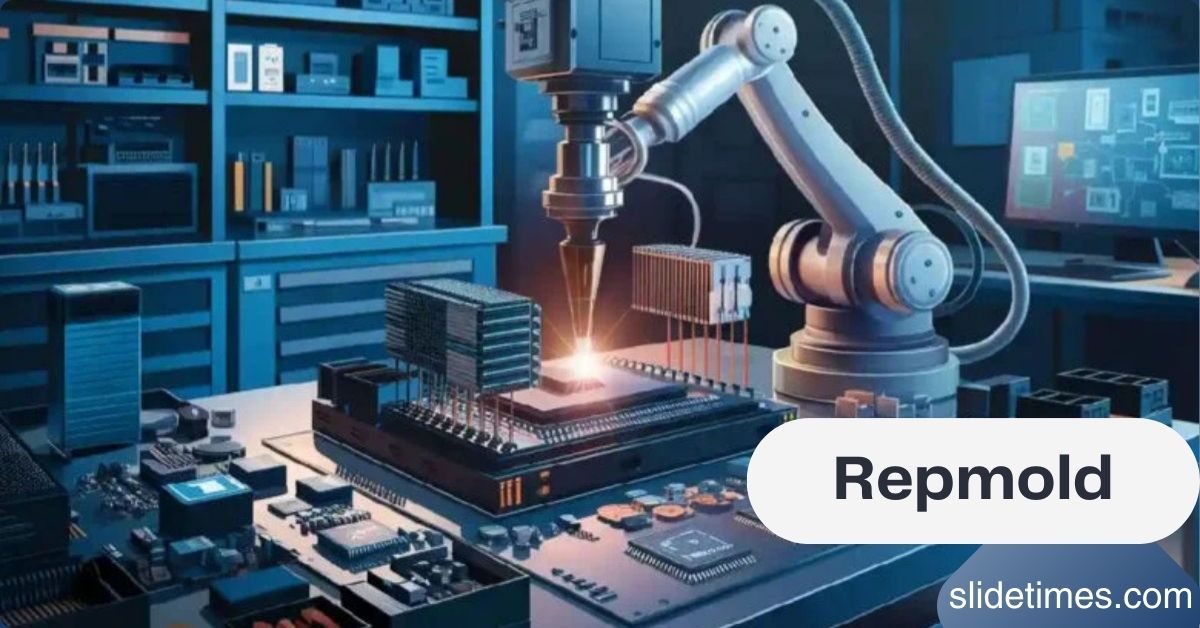The term repmold represents a broad range of technologies, systems, and processes that deal with replication, modeling, and molding. At its core, repmold focuses on creating accurate and scalable copies of designs, prototypes, or products. It is not just about making things look similar—it’s about producing items that carry the same precision, durability, and usability as the original.
From eco-friendly product designs to rapid prototyping for industries, repmold is transforming how modern manufacturing, engineering, and creative design are carried out. Whether it’s shaping medical devices, building auto parts, or even creating sustainable packaging, repmold is at the center of innovation.
In this article, we will dive deep into the world of repmold, exploring its meaning, history, technology, industries it impacts, benefits, challenges, and the exciting future it promises.
What is Repmold?
Repmold can be best understood as the science and art of replicating or molding designs into tangible products. It often uses advanced manufacturing methods like 3D printing, CNC machining, injection molding, and eco-friendly processes to produce results that are:

- Highly accurate
- Fast to manufacture
- Scalable for mass production
- Cost-efficient
- Sustainable
In simpler terms, repmold takes an idea or model and turns it into something real—quickly and precisely.
The Evolution of Repmold
To understand how powerful repmold has become, it’s important to look at its evolution:
Also Read: iofbodies.com Privacy: A Comprehensive Guide
- Traditional Molding Techniques
Early forms of molding used materials like clay, stone, and wood. Craftsmen would shape these manually, often with inconsistent results. - Industrial Era Molding
The rise of factories brought methods like metal casting, plastic injection molding, and die casting. These processes allowed higher volume production with improved accuracy. - Digital Age and Repmold
Today, repmold technologies combine traditional methods with computer-aided design (CAD), 3D scanning, and AI-driven prototyping, allowing engineers and creators to replicate items with unmatched precision.
Key Technologies Behind Repmold
Repmold is not one single technology. Instead, it’s an ecosystem that combines multiple techniques and tools:
1. 3D Printing
Also called additive manufacturing, 3D printing allows rapid prototyping of designs directly from digital files. It is especially useful in healthcare, aerospace, and automotive industries.
2. CNC Machining
Computer-controlled cutting tools carve materials into exact shapes. CNC works with metals, plastics, and composites, ensuring durability and precision.
3. Injection Molding
One of the most widely used repmold techniques, injection molding involves injecting molten materials (like plastic) into molds. This is perfect for mass production.
4. Vacuum Casting
Vacuum casting helps create detailed and accurate prototypes. It’s useful for industries where both quality and low-volume runs are required.
5. Eco-Friendly Molding
Modern repmold processes use recyclable materials, biodegradable plastics, and energy-efficient techniques to reduce environmental impact.
Also Read: Definition of “Käänjä” – Detailed Guide In 2024
Applications of Repmold in Different Industries
Repmold is not tied to just one sector. It is shaping multiple industries in unique ways:
Automotive Industry
- Producing spare parts and components with speed and consistency
- Lightweight car parts for fuel efficiency
- Custom prototyping for new designs
Healthcare Industry
- Replicating medical tools and surgical models
- Prosthetics and implants made with patient-specific accuracy
- Drug packaging and delivery systems
Aerospace and Defense
- High-precision aircraft components
- Prototypes for drones and spacecraft
- Safety-focused designs with strong materials
Consumer Goods
- Household appliances and gadgets
- Sustainable packaging solutions
- Toys, sports gear, and lifestyle products
Construction and Architecture
- Prefabricated mold structures
- Replicated design elements like tiles and panels
- Prototypes for smart housing solutions
Fashion and Jewelry
- Custom jewelry molds for unique designs
- Replicating fashion accessories quickly
- Eco-friendly fashion production
Benefits of Repmold
Repmold offers multiple advantages across industries:
- Speed – Rapid prototyping shortens product development cycles.
- Accuracy – Designs can be replicated with microscopic precision.
- Cost Savings – Reduces waste, lowers material costs, and improves efficiency.
- Scalability – Works for both small runs and mass production.
- Sustainability – Eco-friendly materials and reduced waste production.
- Customization – Products can be tailored to exact needs.
Challenges of Repmold
Like any technology, repmold faces challenges:
Also Read: Coyyn.com Digital Business: Empowering Your Online Success
- High Initial Costs – Advanced machines and molds require investment.
- Material Limitations – Not all materials are suitable for molding.
- Complex Designs – Extremely intricate designs may require hybrid processes.
- Skill Gaps – Requires trained professionals to operate and manage systems.
- Sustainability Issues – Despite progress, some plastics used in repmold are not biodegradable.
Repmold and Sustainability
Sustainability is no longer an option—it’s a necessity. Repmold is contributing by:
- Using recyclable and biodegradable materials
- Reducing energy usage through efficient molding techniques
- Allowing for local production, cutting down transportation emissions
- Supporting circular economy models
This makes repmold a vital player in building an eco-friendly future.
The Role of Artificial Intelligence in Repmold
Artificial Intelligence (AI) is making repmold smarter. With AI, industries can:
- Predict product flaws before molding
- Automate design corrections
- Optimize material use for eco-friendly outcomes
- Speed up the entire production cycle
AI-powered repmold is setting new benchmarks for speed and reliability.
Future of Repmold
The future of repmold looks incredibly promising:
- Integration with Robotics – Fully automated molding systems.
- Smart Materials – Self-healing or recyclable materials for sustainable use.
- On-Demand Manufacturing – Products created instantly when ordered.
- Decentralized Production – Localized factories powered by digital blueprints.
Repmold is not just about replicating products—it is about reshaping how industries think about production, sustainability, and innovation.
FAQs About Repmold
What does repmold mean?
Repmold refers to technologies and methods for replicating or molding designs into physical products with high accuracy and efficiency.
Is repmold the same as 3D printing?
No. While 3D printing is part of repmold, the concept also includes CNC machining, injection molding, vacuum casting, and eco-friendly molding techniques.
Why is repmold important?
Repmold speeds up innovation, reduces costs, and supports sustainability. It allows industries to bring ideas to life faster and in a more eco-friendly way.
Which industries benefit most from repmold?
Automotive, healthcare, aerospace, consumer goods, construction, and fashion are some of the industries benefiting from repmold.
Is repmold eco-friendly?
Yes. Modern repmold processes use recyclable materials and reduce waste. However, not all materials are eco-friendly, so continuous improvements are needed.
Can small businesses use repmold?
Absolutely. With the rise of affordable 3D printers and shared manufacturing services, even small businesses can adopt repmold technologies.
How does repmold save money?
It cuts material waste, reduces errors, shortens prototyping times, and lowers energy use—helping businesses save in the long run.
Conclusion
Repmold is more than a manufacturing technique—it is a revolution in replication and molding. By combining speed, accuracy, sustainability, and affordability, it is driving industries toward a smarter and greener future.
From cars and airplanes to jewelry and medical tools, repmold is shaping the world around us. Its ability to merge creativity with precision is what makes it a game-changer for modern industries.
The future of repmold promises even more exciting developments, with AI, robotics, and smart materials pushing the boundaries further. For businesses, innovators, and consumers, repmold is not just about making products—it’s about making progress.
